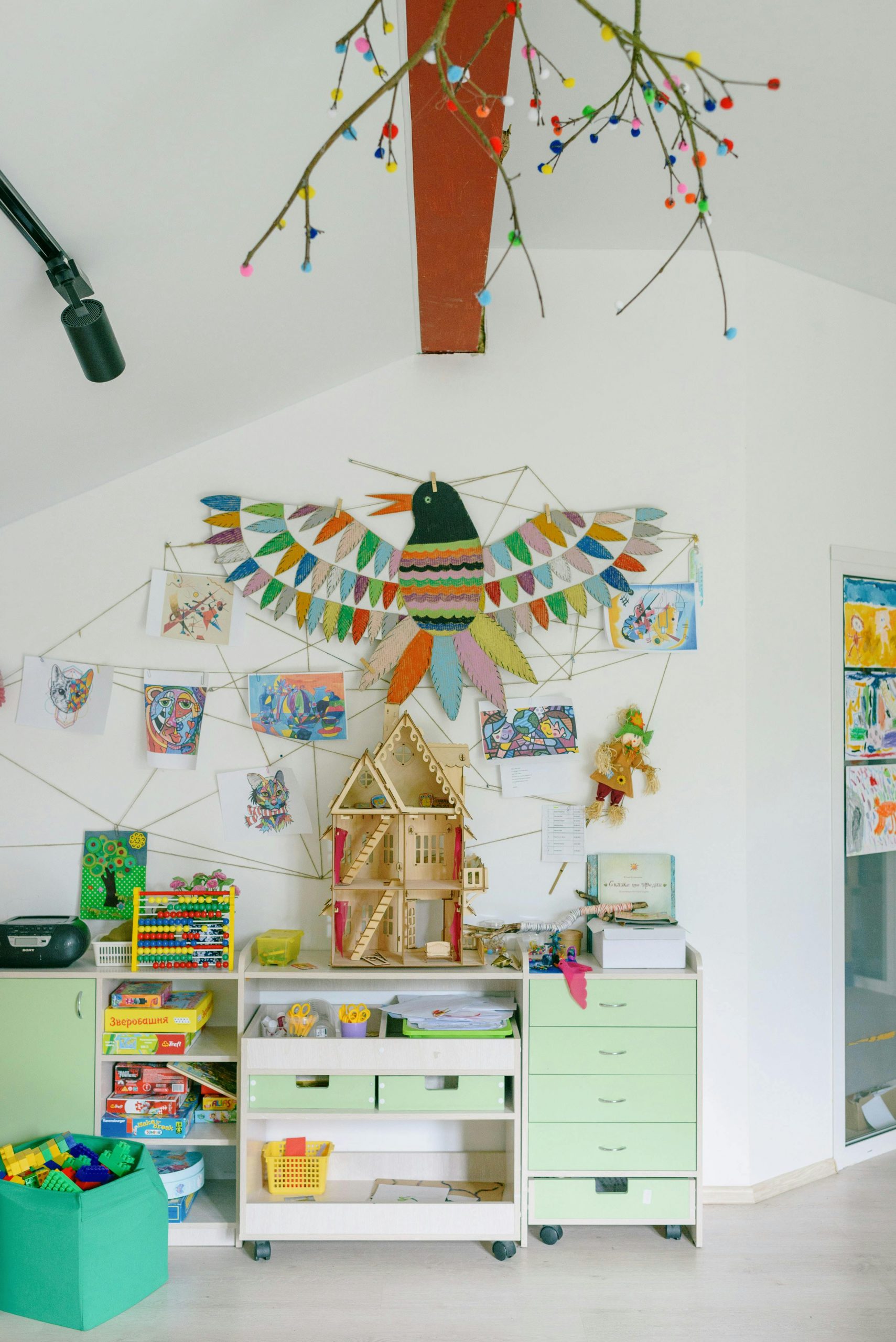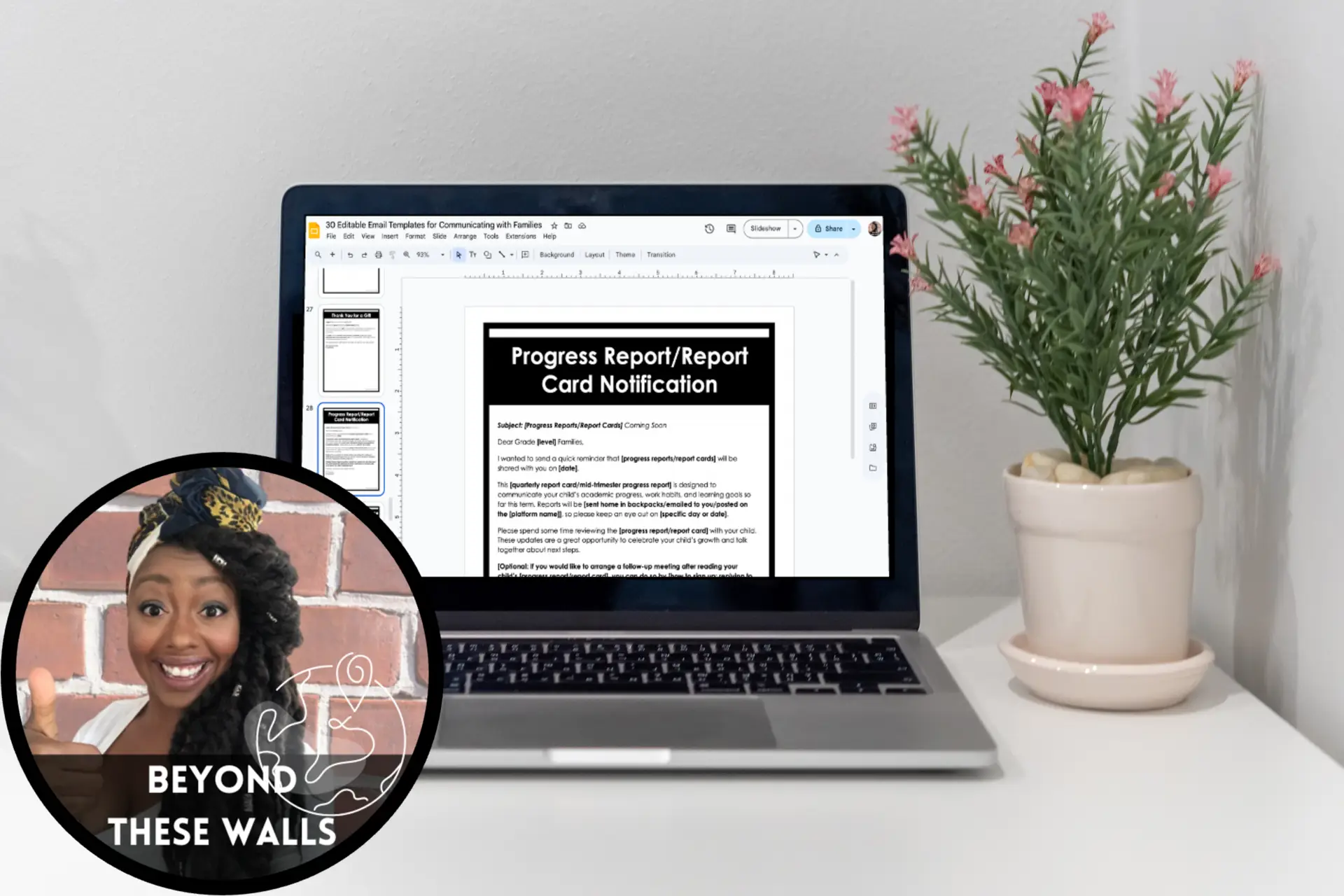Starting your first year of teaching is like stepping onto a rollercoaster that’s already moving. You’re excited, nervous, hopeful, overwhelmed—and somehow still eager to do it all perfectly. I’ve been there. I had just come out of a fantastic teacher prep program in university, ready to change lives… and then I stepped into my very own classroom and realized it just real….I was the one in charge…Cue the cold sweats.
The truth? No matter how prepared you feel, nothing can fully replicate the experience of your first classroom. And while there’s so much advice out there for a first year teacher, I’ve tried to narrow it down to 11 practical, real-world tips that can actually help you keep your head above water—and even allow you to enjoy the ride.
Whether you’re seeking new teacher tips, in need of a confidence booster, or are just trying to figure out where to begin, this list is all about supporting new teachers with the kind of guidance I wish someone had given me.
1. Create Organization Systems That Work for You
Yes, Pinterest-worthy classrooms are lovely. But your classroom needs to function before it can sparkle. A key piece of advice for new teachers: find organizational systems that support your teaching style and supports your students’ independence.. This will make your first year of teaching feel a whole lot smoother.

Some helpful systems to set up:
-
- Handout storage for easy access
- Work collection trays (I never take work from students’ hands…so I don’t have to worry about misplacing it on the way back to my desk—everything goes in the tray!)
- In-progress work for that work that takes more than a day
- Homework recording systems for home-school communication
- Material stations for pencils, markers, scissors, etc.
Don’t stress if someone else’s system doesn’t work for you. Experiment, tweak, and keep what works. Ditching an unhelpful system is not failure—it’s professional growth.
Want more on helpful systems and routines? Check out my back-to-school blog post on routines, procedures and helpful strategies here.
2. Look at Report Cards Now—Trust Me
One of my biggest facepalm moments my first year was realizing that the report cards at my first school looked nothing like what I expected. Let’s just say, there were additional areas of student learning I wish I had documented along the way, so that it would have saved me so much more time when it came time to write that first report. A top new teacher tip: familiarize yourself with the report card format at the beginning of the year. It will save you stress when it’s crunch time and help you focus your assessments all year long.

3. Find a Buddy
My school does a buddy system where first year teachers choose a returning staff member they click with. It’s genius—mentorship without awkward pairings.
If your school doesn’t have this, create your own. Find a teacher who’s kind, knowledgeable, and patient. Tell them how much you appreciate their support, and don’t be afraid to ask questions. Everyone remembers their first year of teaching, and most teachers are happy to help.
Tip: Bring in a nice treat to show them your gratitude…something sweet and a thoughtful gesture are great ways to start the school day and build a friendship!
4. Set Up Independent Routines Early
This might be my favorite piece of advice for new teachers: build in activities students can do without you hovering. Bellringers, literacy stations, morning routines—they’re gold.
Think:
-
- Students know what to do
- They can find materials themselves
- You’ve practiced the routines together
These routines give you breathing room—to check in with a student, answer an email, or handle the inevitable post-recess meltdown. Students practice independence and you gain some needed additional time to handle business…Win-win!
5. Set Limits – Set Boundaries
The Reality of Teaching your First Year
Let’s be real: during your first year of teaching, you will probably work after school hours (at least if your day doesn’t include plenty of planning period scheduled in it). It’s an unfortunate reality of being a new teacher. You’re still learning how to plan effectively, gather materials, understand pacing, and wrap your head around the hundreds of little details that go into a single school day. And while I wish I could tell you that your teaching day ends when the bell rings, that’s not always the case if you want to plan engaging lessons and give meaningful feedback, plus the millions of other things you must but don’t want to do…staff meetings (cough).. There are a lot of voices out there saying don’t work beyond contracted hours and I get it. This should be the case…but I don’t want to set you up for a frustrating first year. It is completely normal if you need a little bit more time to get all your planning done, do grading, document incidents, finish copying and sending emails.
And what I can promise you, is a prepared teacher is a more relaxed teacher during lessons. The chaos that can ensue due to being unprepared isn’t worth it.
But here’s the important part: YOU HAVE TO SET BOUNDARIES!

Setting Boundaries that Work for You
In my case, I decided early on that I wouldn’t bring work home. That meant I stayed a little later some days to finish things up. But once I walked out that door, I was done. Home was for rest, not laminating centers on the couch or replying to emails during dinner.
You need to figure out what kind of boundary works best for you. Maybe you need to peace out right when the day is done and take work home. Maybe you’d rather take a break, grab some food and tackle it in pajamas. The most important thing is don’t let it consume your entire evenings and weekends. Burnout is real, and no one benefits from an exhausted, overextended teacher.
The Good News
Here’s the good news: IT DOES GET EASIER! The more experience you gain, the less time you’ll spend prepping, planning, and overthinking every little thing. You’ll have templates ready to go, resources at your fingertips, and instincts that guide you. So yes, the workload is heavy at first—but it lightens. Trust me, you’ll find your rhythm.
6. You Don’t Have to Know Everything
One of the best ways to support new teachers is to remind you that it’s okay to tell your students, “I don’t know.” I know this can be an uncomfortable feeling. You want to present yourself as a professional and it may feel like you’re admitting failure…but that is a lie. Actually, you are doing something really powerful and I want to empower you to take advantage of these moments…
Use these moments to model curiosity and humility. Celebrate student knowledge, ask great questions, and model how to find answers. You’ll create a classroom culture that values learning over perfection.`
7. Get to Know Your Students—It Changes Everything!
Of all the tips I can offer a first year teacher, this one might be the most powerful: get to know your students. Not just their reading levels or how they scored on the math assessment—but who they are as people. What makes them laugh? What frustrates them? What are their interests, their fears, their dreams?
Because here’s the truth: when students know you care about them, they start to trust you. And trust is the most powerful motivational tool in your classroom. I’ve had students who were labeled as “difficult” or “unmotivated” by other teachers walk into my classroom and produce some of the most extraordinary work of their lives. Was it because I had better lessons or more engaging materials? No. It was because I earned their trust—and with that trust, I was able to challenge them in ways they wouldn’t allow other teachers to.
Challenging Students
Trust doesn’t mean being a pushover. It means your students know you’re in their corner. It means they believe that when you push them, it’s because you see their potential—not because you’re trying to make their life harder. That belief changes everything.

Supporting Students
Getting to know your students also helps you understand how to support them. You’ll start to see when they need encouragement and when they need a nudge. You’ll learn when to challenge them and when to ease up. That kind of insight doesn’t come from data points—it comes from genuine relationships.
So take the time. Ask questions. Listen closely. Greet them by name, notice their moods, celebrate their successes (even the small ones), and check in when something seems off. The more you invest in your students as people, the more they’ll invest in your classroom. And that’s when real learning begins.
8. Use Email Templates to Save Your Sanity
One of the most time-consuming parts of teaching is email communication with parents. I learned this the hard way. In my early years, I spent way too much time crafting individualized emails—trying to sound positive, professional, and clear—especially when discussing concerns. It was exhausting. I knew I needed a system.
Eventually, I created a bank of templates and go-to phrases I could pull from to speed things up while still sounding warm and personal. This shift was a game-changer. I no longer had to reinvent the wheel every time I wrote a message. Instead, I could focus on what actually needed to be said—and say it with clarity and confidence.
If you’re new to teaching (or even if you’ve been at it a while and still dread emails), having a solid set of templates can seriously save you time and stress. I’ve put together an email template toolkit specifically for teachers—filled with examples for everything from behavior updates to positive praise. If you’re not sure where to start or just want to take one more thing off your plate, it might be just what you need.
Templates include:
- Welcome email introducing yourself
- Celebrating student progress
- Behavior to be addressed
- Injury of student
- Field Trip reminder
- Request for volunteers
- Conference request
- And so much more!
You can purchase my 30 Editable Email Templates for Parent/Family Communication All Year Long on my TPT store by clicking here.
Whether you use my resource or create your own, the key takeaway is this: streamline wherever you can. Teaching already takes so much time and energy—systems help you protect both.
9. Use Sick Days (and Plan for Them)
You’re not a robot. You will get sick. And yes, writing sub plans is a pain—but it’s worse to push through and infect your whole classroom. Keep a basic sub folder ready with:
-
- Easy-to-follow lesson plans
- Independent activities
- Routines students already know
Then rest. You’ve earned it.
10. Build Real Relationships with School Staff
Secretaries. Custodians. Librarians. IT heroes. These people keep your school running. Go beyond politeness—get to know them. Say thank you often. Collaborate when you can. These relationships will make your job easier and your days brighter.
11. End the Day with a Win: Send Positive Notes
Some days will end in chaos, and you’ll feel like nothing went right. Here’s my go-to solution: send a quick, kind note home about something positive a student did that day. It:
-
- Builds family trust
- Strengthens relationships
- Ends your day on a high note
Even if the student wasn’t involved in the chaos, your outlook will shift when you focus on something good.
Note: This is where having a template comes in handy.
You’ve Got This, First Year Teacher
You don’t have to be a superhuman teacher. Your first year of teaching will have highs and lows, wins and whoopsies. That’s normal. You’re learning, and you bring something incredibly valuable to your students and your school—enthusiasm, new ideas, and heart.
So take a breath. Know that it’s okay not to have it all figured out. And remember: the stage you’re in right now is important, powerful, and enough.
And if you happen to be starting out at an IB PYP school, I’ve been there. As someone who’s been both overwhelmed by the beautiful complexity of the PYP and served as a curriculum coordinator, I know how tricky those first steps can be. I’ve written a blog post all about the First Year Teaching the PYP: What I wish I’d know at the Start—definitely check it out if you’re looking for some clarity or just need a place to begin.
I’d love to know which of these tips helped you most! Drop a comment or send me a message—I’d love to hear what resonated with you or what you’d add to the list.


